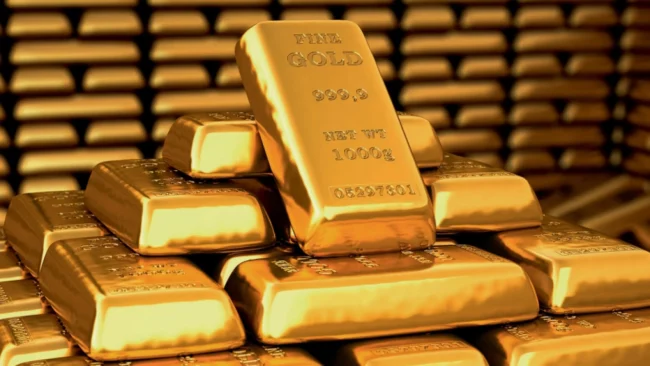Gold prices rose in Asian trade on Monday, recovering the majority of their loses in the new year, as continued Middle East tensions fueled safe-haven demand. And traders remained confident that the Federal Reserve will reduce interest rates sooner rather than later.
Demand for the yellow metal surged as hostilities between the United States and the Houthi group. Who are allied with Iran, intensified over the last week, raising the possibility of a spillover into the Israel-Hamas conflict.
Due to the mixed the United States inflation data. Traders continued to mainly hold onto their bets that the Fed might start reducing interest rates as early as March 2024. This helped to keep the dollar weak and encouraged some capital flows into rate-sensitive assets.
Gold Futures and Spot Gold Prices Reflect Positive Movement:
Gold futures expiring in February increased by 0.3 percent to $2,057.85 an ounce by 00:27 ET (05:27 GMT), while spot gold increased by 0.2% to $2,053.88 an ounce.
Based on the CME Fedwatch tool, traders seemed to have mostly held onto their projections. That the Fed will reduce interest rates by 25 basis points in March.
The tool increased the traders’ estimated probability of a March reduce from 64% to 70%.
Data on inflation that was mixed supported this idea.
In December, producer price index inflation dropped more than anticipated, while consumer price index inflation grew marginally more than anticipated.
The focus shifted to several speeches given by Fed representatives this week. Which are anticipat to provide additional hints about the bank’s outlook.
However, a few Fed members have played down expectations for early rate reductions.
In the near future, rangebound gold trading is likely to persist due to uncertainty surrounding the direction of US interest rates. But the yellow metal stands to benefit from any declines in lending rates this year.
Copper Prices Rebound Despite Unfavorable Signals from China
After a sluggish start to the new year, copper prices among industrial metals increased significantly on Monday. Though the outlook for the red metal was dimmed by unfavourable signals from China.
March-ending copper futures increased 0.8% to $3.7648 per pound.
Unexpectedly, China’s central bank held off on raising its medium-term lending rates on Monday, suggesting that the biggest copper importer in the world had little room to further ease monetary policy and sustain a shaky economic recovery.
Monday’s move also suggests that China’s benchmark loan prime rate will remain unchanged, indicating that the economy will receive only limited monetary stimulus, which has so far done little to support growth.
Alongside rising domestic output and high inventories, Chinese trade data released on Friday also revealed a decline in copper imports in December.
